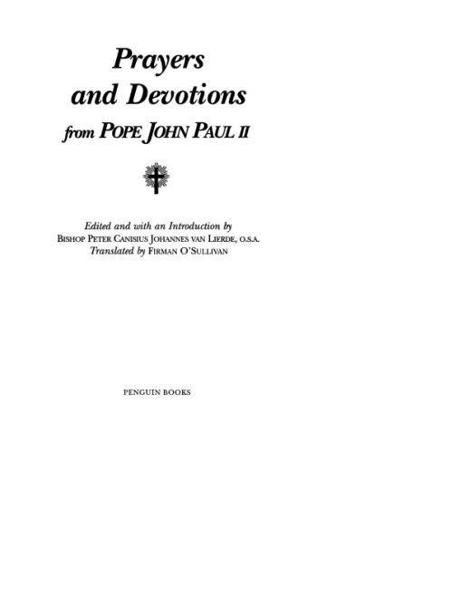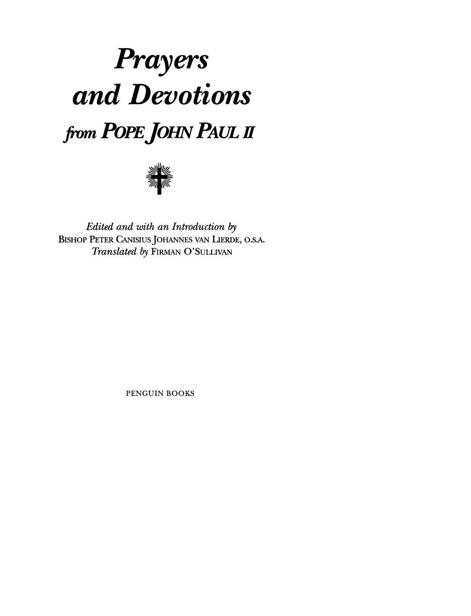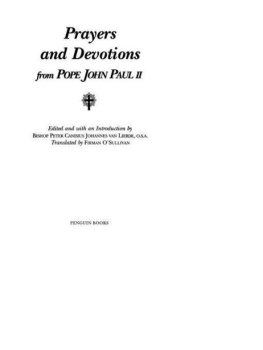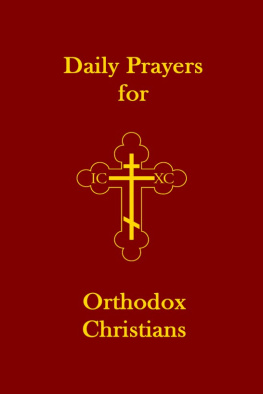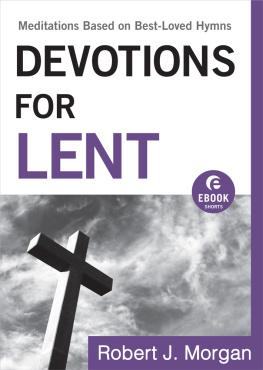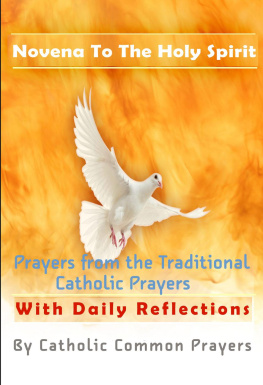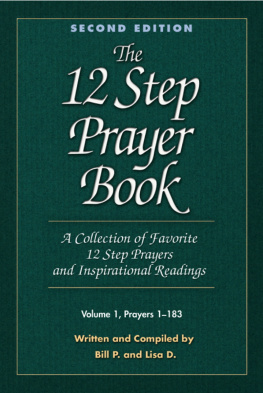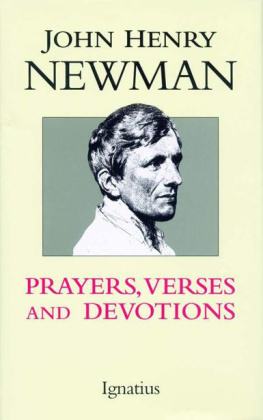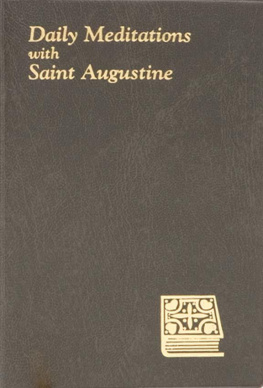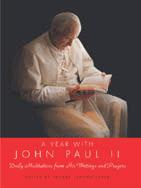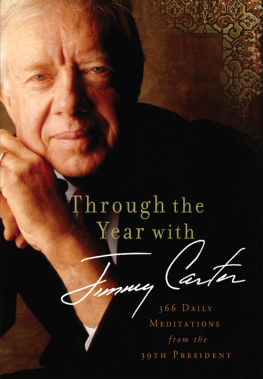Table of Contents
PENGUIN BOOKS
Published by the Penguin Group
Penguin Putnam Inc., 375 Hudson Street,
New York, New York 10014, U.S.A.
Penguin Books Ltd, 27 Wrights Lane, London W8 5TZ, England
Penguin Books Australia Ltd, Ringwood, Victoria, Australia
Penguin Books Canada Ltd, 10 Alcorn Avenue,
Toronto, Ontario, Canada M4V 3B2
Penguin Books (N.Z.) Ltd, 182 190 Wairau Road,
Auckland 10, New Zealand
Penguin Books Ltd, Registered Offices:
Harmondsworth, Middlesex, England
First published in the United States of America by
K.S. Giniger Company, Inc. 1984
Published in the United States of America by Viking Penguin,
a division of Penguin Books USA Inc. 1994
Published in Penguin Books 1998
Copyright The K. S. Giniger Company, Inc., 1984 All rights reserved
LIBRARY OF CONGRESS CATALOGING IN PUBLICATION DATA
John Paul II, Pope 1920-
Prayers and devotions from Pope John Paul II.
1. Devotional calendars Cathohc Church. 2. Catholic Church Prayer-books and devotions English. I. Lierde, Peter Canisius Johannes van. II. Title.
eISBN : 978-1-101-53296-6
BX2170.C56J .3
84-42799
http://us.penguingroup.com
Introduction
The Aim
This book is arranged to offer the modern reader, at grips with various daily tasks, a chance of getting to know and entering into the broad and ample thought of the Supreme Pontiff, John Paul II, day by day, without too much trouble, in calm reflection in a word, a moment of repose from the occupations of life.
The compiler has gathered a harvest from the mind and heart of Karol Wojtyla, over the days of the liturgical year an authentic breviary of Pope John Paul IIs thought, but never a burdensome one.
There is but one entry for each day. Its text is intended, in the first place, for Catholics and all Christians believing in Jesus Christ, but also for any and every human being of good will who aspires to that liberty which does not disappoint.
The Contents
The liturgical year is a period of twelve months. It extends from the beginning of December through November and is entirely concentrated on the most lovable person of Jesus Christ. It studies, meditates, and enters into His life, from His birth in time down to His glorious return at the end of time. Over that period the liturgical year reveals His person, His work, the deep reasons for His coming among mankind, and His present vitality for every human being.
It forms an authentic cycle of events which are simple but extremely precious. It is a far-reaching, richly adorned arch; a film, projected rapidly but with stirring effect, sometimes with moments of suspense, down to the final solemn and universal scene. It is a singular, unique voyage of the heart. The cycle of the liturgical year marvelously depicts the divine and human mysteries of Jesus, true God and true man.
A point of great weight and value: the mysteries of Jesus Christ have a twofold aspect. The historical aspect consists of the concrete, precise, punctual succession of acts, happenings, and determining events. The spiritual aspect consists of the interior and psychological attitude, equally concrete, precise, and punctual, lived by Jesus in every circumstance of His life, in each of His mysteries.
The historical aspect is called mystery mysterium . The spiritual aspect is called the interior power of the mystery vis mysterii . It means the very high charge accumulated by Christ and put into every historical event of His existence and mission. It is His mind, His heart, the most beautiful sum of all His virtues in all His daily activities. It means the hidden core of the various states which He accepted or underwent.
So, as we begin the spiritual journey at the end of November or beginning of December, we are all invited to contemplate Him hidden in the immaculate womb of Mary of Nazareth, to follow Him in His silent birth, and to observe His threefold manifestation or epiphany of the visit of the Wise Men of the East, the baptism on the banks of the Jordan, the miracle of the water changed into fine wine at Cana. Then we find Him again at Nazareth, as He grows in wisdom and age and grace before God and men1 and as, in the liturgical readings, He is presented as the worker of Creation.2 We are led by the hand through His public life: made up of temptations, healings, miracles, teaching, and guidance. The austere period of Lent is one of rich and extensive preaching on penitence, conversion, reconciliation, but also the time of the secret plot woven by pharisaical formalism and the envy of the powerful, culminating in the drama of the Cross, Death, and Burial, which is then transformed into splendid Resurrection. Then follows His marvellous Ascension, with the consequential promise of the Holy Spirit to be sent down upon the Apostles and Mary Most Holy.
Then we have the beginning of the second part of the liturgical year. It is marked by the tangible, proclaimed operation of the Holy Spirit. Through this operation, the inward power of all Christs mysteries, after having been at work in the first part of the liturgical year, is now even more accentuated, and continued in the life of the Church. The Church was born from the sacred side of Jesus on the cross and was publicly proclaimed by the Holy Spirit on the day of Pentecost: Go, therefore, and make disciples of all the nations. Baptize them in the name of the Father and of the Son and of the Holy Spirit. Teach them to carry out everything I have commanded you. And know that I am with you always until the end of the world.3 The Paraclete, the Holy Spirit whom the Father will send in my name, will instruct you in everything, and remind you of all that I told you.4
So it is in any case undeniable that Christ founded His Church in the world; it is also supremely true that He raised the Church up for the world, not so as to annul and obstruct the worlds life but to orientate all who are born in the world toward possession of God, who is loved and served on earth and seen and enjoyed in an inexpressible way to eternity: God did not send the Son into the world to condemn the world, but that the world might be saved through him.5 I solemnly assure you, the man who hears my word and has faith in him who sent me possesses eternal life. He does not come under condemnation, but has passed from death to life.6
So it becomes fitting and useful to be able to condense the value and preciousness of the liturgical year in three key words: Christ living and true, who revitalizes and continues his mysteries the members of his Church , for the good of the world . Through Christ our Lord, you, O God, ever create and hallow, ever give life, bless and present every good thing to the world.7
Christ, Church, World
In the first six months of the liturgical year everything is concentrated on Christ of course. How is the vital current traced out in the second six months of this book?
Christs vitality and His mysteries derive from Him, head of the Church, in the Churchs members, through the Holy Spirit, who is the soul and heart of the same Church.
Pentecost is the annual renewal of the descent of the Holy Spirit. It is therefore the starting point. In accordance, then, with the path taken by the liturgy and pastoral usage, the reader is presented with the action of the Holy Spirit. This is manifested also in the Sacrament of Holy Chrism or Confirmation; there has already been meditation on the Sacrament of Baptism at Epiphany and during Lent, while the Sacrament of Penance finds its pastoral place in the time of Lent, too.
